For the 2025 school year, there are 2 public elementary schools serving 602 students in Triton School District. This district's average elementary testing ranking is 4/10, which is in the bottom 50% of public elementary schools in Minnesota.
Public Elementary Schools in Triton School District have an average math proficiency score of 45% (versus the Minnesota public elementary school average of 47%), and reading proficiency score of 40% (versus the 51% statewide average).
Minority enrollment is 22% of the student body (majority Hispanic), which is less than the Minnesota public elementary school average of 40% (majority Black and Hispanic).
Overview
This School District
This State (MN)
# Schools
4 Schools
1,655 Schools
# Students
909 Students
571,925 Students
# Teachers
75 Teachers
40,363 Teachers
Student : Teacher Ratio
12:1
12:1
District Rank
Triton School District, which is ranked within the bottom 50% of all 522 school districts in Minnesota (based off of combined math and reading proficiency testing data) for the 2021-2022 school year.
The school district's graduation rate of 85-89% has decreased from 90-94% over five school years.
Overall District Rank
#308 out of 527 school districts
(Bottom 50%)
(Bottom 50%)
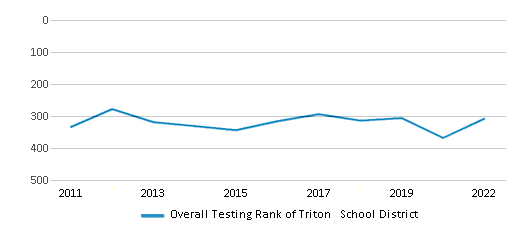
Math Test Scores (% Proficient)
42%
45%
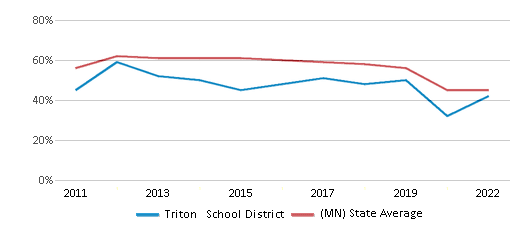
Reading/Language Arts Test Scores (% Proficient)
42%
51%
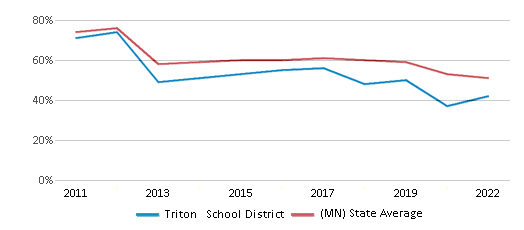
Science Test Scores (% Proficient)
33%
41%
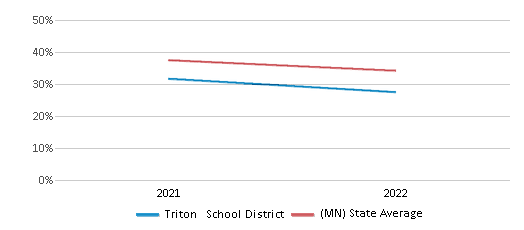
Graduation Rate
85-89%
84%
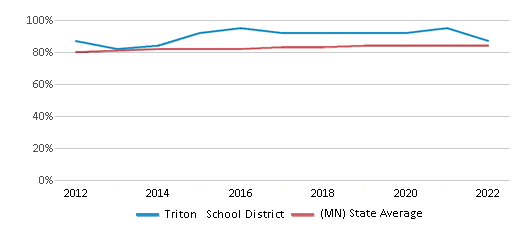
Students by Ethnicity:
Diversity Score
0.36
0.61
# American Indian Students
1 Student
10,480 Students
% American Indian Students
n/a
2%
# Asian Students
n/a
42,165 Students
% Asian Students
n/a
7%
# Hispanic Students
163 Students
65,127 Students
% Hispanic Students
18%
12%
# Black Students
5 Students
70,794 Students
% Black Students
1%
12%
# White Students
712 Students
344,281 Students
% White Students
78%
60%
# Hawaiian Students
1 Student
676 Students
% Hawaiian Students
n/a
n/a
# Two or more races Students
27 Students
38,402 Students
% of Two or more races Students
3%
7%
Students by Grade:
# Students in PK Grade:
11
10,698
# Students in K Grade:
50
57,031
# Students in 1st Grade:
62
61,859
# Students in 2nd Grade:
57
63,560
# Students in 3rd Grade:
80
61,751
# Students in 4th Grade:
60
63,575
# Students in 5th Grade:
70
63,290
# Students in 6th Grade:
65
63,180
# Students in 7th Grade:
87
53,666
# Students in 8th Grade:
60
53,924
# Students in 9th Grade:
80
4,107
# Students in 10th Grade:
79
4,634
# Students in 11th Grade:
70
4,740
# Students in 12th Grade:
78
5,910
# Ungraded Students:
-
-
District Revenue and Spending
The revenue/student of $16,129 in this school district is less than the state median of $17,854. The school district revenue/student has grown by 10% over four school years.
The school district's spending/student of $18,986 is higher than the state median of $18,580. The school district spending/student has grown by 10% over four school years.
Total Revenue
$15 MM
$15,547 MM
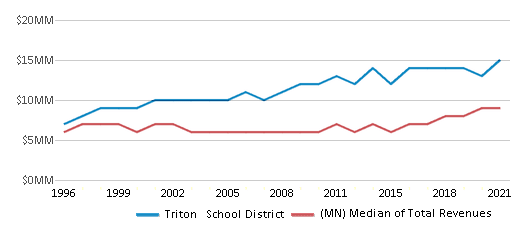
Spending
$17 MM
$16,179 MM
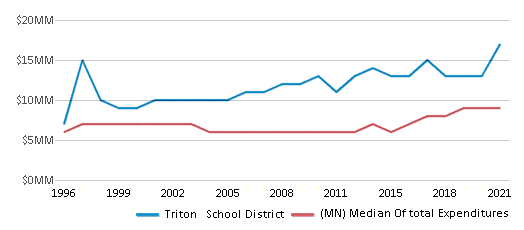
Revenue / Student
$16,129
$17,854
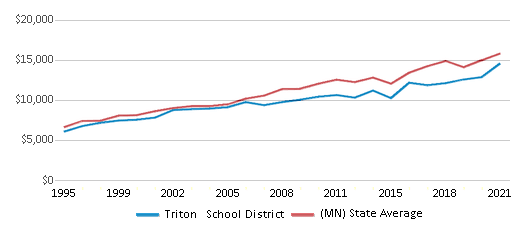
Spending / Student
$18,986
$18,580
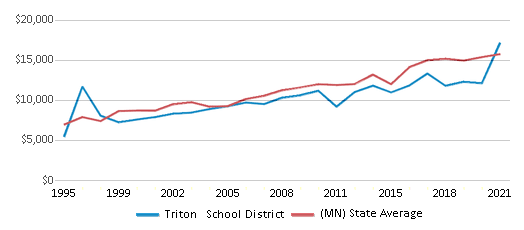
Best Triton School District Public Elementary Schools (2025)
School
(Math and Reading Proficiency)
(Math and Reading Proficiency)
Location
Grades
Students
Rank: #11.
Triton Elementary School
(Math: 49% | Reading: 41%)
Rank:
Rank:
5/
Bottom 50%10
813 W Highway St
Dodge Center, MN 55927
(507) 418-7500
Dodge Center, MN 55927
(507) 418-7500
Grades: PK-5
| 390 students
Rank: #22.
Triton Middle School
(Math: 40% | Reading: 39%)
Rank:
Rank:
4/
Bottom 50%10
813 W Highway St
Dodge Center, MN 55927
(507) 418-7510
Dodge Center, MN 55927
(507) 418-7510
Grades: 6-8
| 212 students
Recent Articles

Year-Round Or Traditional Schedule?
Which is more appropriate for your child? A year-round attendance schedule or traditional schedule? We look at the pros and cons.

Why You Should Encourage Your Child to Join a Sports Team
Participating in team sports has a great many benefits for children, there is no doubt. In this article you will learn what those benefits are.

White Students are Now the Minority in U.S. Public Schools
Increasing birth rates among immigrant families from Asia and Central and South America, combined with lower birth rates among white families, means that for the first time in history, public school students in the United States are majority-minority. This shift in demographics poses difficulties for schools as they work to accommodate children of varying language abilities and socio-economic backgrounds.





